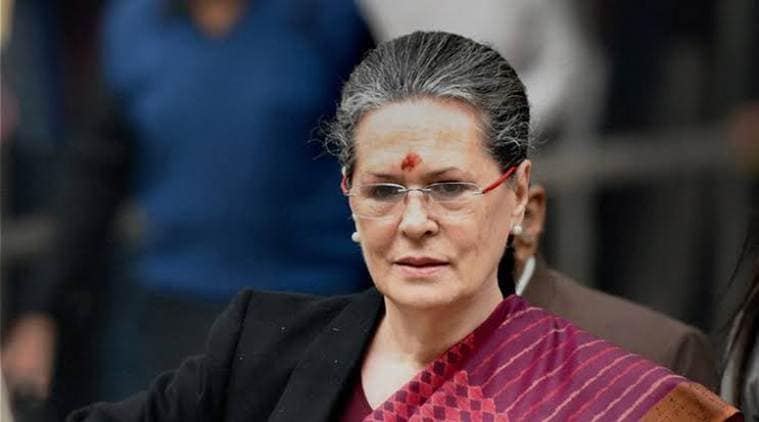 The high command or party leadership has shrunk to the members of the family, which believes that the Congress cannot survive without them.
The high command or party leadership has shrunk to the members of the family, which believes that the Congress cannot survive without them.
The factional fight in the Rajasthan unit of the Congress, which has led to the Sachin Pilot dissociating from the party, was preceded by the exodus of Jyotiraditya Scindia and many others. Such episodes cannot be described as anti-party activities or local problems, nor can they be masked by the convenient conspiracy theory about the BJP fanning disaffection in the Congress. The departure of these leaders poses a larger question about the decline of the Congress. None of them has shown ideological disagreement. It is astonishing that the 10 Janpath Brains Trust seems to believe that the party is strengthened with every exit.
The radical break from the past in the party’s culture is obvious. During the Indira Gandhi and Rajiv Gandhi era, the party high-command was constituted by both members of the Nehru-Gandhi family and eminent non-family leaders. Though the party was run oligarchically, it had not exhausted the capacity to co-opt dynamic leaders from the states. This ensured that it was at least minimally sustainable. The high command or party leadership has shrunk to the members of the family, which believes that the Congress cannot survive without them.
The present crisis is nothing but a logical conclusion of the seeds sown during Jawaharlal Nehru’s period. He inaugurated and imposed hegemonic politics, which ensured the progressive decline of the party. The election of the party president in 1950 marked the beginning. There were no objections when Nehru could not digest internal party democracy. Purushottam Das Tandon, an immensely popular veteran Congressman, bagged 1,306 votes to defeat J B Kripalani (1,092 votes), who was backed by Nehru. He was made to relinquish the elected office through pressure and manipulation. Nehru masked his dislike for a strongman by taking the shelter of ideology. First, he denounced Tandon for attending the Refugees Conference in Delhi and when this was contested, he used strange logic. He said, “Tandon exercised a restraining influence on the refugee’s conference but his presence and presidentship gave a certain influence and prestige to the Conference.” It was a wrong diktat. Cohesiveness in the party does not mean the end of an individual’s freedom to think, express and dissent. The difference between dissent and dissidence should not be diluted.
The emasculation of democratic principles got vocal support when 29 members of the All-India Congress Committee passed a resolution on July 13, 1951, giving Nehru the final word in the selection of more than 4,300 candidates for the Lok Sabha and states’ elections.
Collective decision-making is the mother of democracy. But the dynamic of power in the Congress left few unscathed. The idealists, who grew under the moral leadership and training of Mahatma Gandhi, failed to stand up to the individualism of Nehru. Distinctiveness and human creativity suffer in the face of political expediency. Leaders in such scenarios develop a dislike for alternative voices and autonomy.
No historian in India has thus far ventured to re-examine the decline of the party. There is ample individualism in politics but it is empty of intellectualism. This dichotomy is injurious. When intellectuals write without passion and prejudice, they reflect truth and use their energy and pathos to right wrongs. Now, there is not even a slight difference between intellectuals and party theoreticians. They lack rigour. That is the reason the removal of Subhas Chandra Bose from the party, who defeated P Sitaramayya for the Congress presidentship in 1939, remains largely undiscussed because it hurts the image of Mahatma Gandhi. There is another incident, and perhaps exceptional in the effective life of the Congress. The high command suggested to the Madras Congress legislature party in 1946 that it elect C Rajagopalachari, but this was rejected. T Prakasam secured 148 votes against Rajaji’s 38 votes. But the high command manipulated local politics and he rose to the office in just 11 months.
Indira Gandhi did not disguise her dislike for people who undermined her command. She threw out many leaders who stood by her in a crisis. The example of Devraj Urs comes to mind. However, the Congress under Sonia and Rahul is guided even more by coercive individualism. The palace culture demands unalloyed loyalty in its autocracy. It encroaches on human liberty to the extent of expecting members not to use their rationality.
Shankar Rao Deo, once a Congress president, delivered three lectures in August 1949 and predicted the decline of the party. In his second lecture on July 15, he said: “It is said that the Congress has an ideal but that there is no idealism left in the Congressmen. Translated into plain and simple language, this statement means that no more have Congressmen, in general, the aim of attaining moral and social excellence, nor have they any zeal left in them to work for it even at the cost of immediate pleasure or comfort.” He realised that the Congress leadership had little or no affection for what Gandhi had preached and practised: “…to the vast majority of the Congressmen, Gandhiji was essentially a political, not a moral leader. The… purificatory side was accepted …as a price of his leadership than a matter of inner conviction.”
The organisational decline of the Congress has been preceded first by a moral decline and subsequently by being in an ideological wilderness. Therefore, it is folly to cover its ineffectuality and incapacity by blaming the BJP government and RSS ideology. One can meet ideology with an ideology, organisation by an organisation. As Deo said, “there is no half-way house on this road”.
The writer is a BJP Rajya Sabha MP